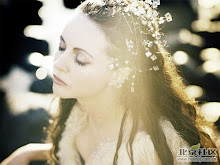 Jimmy is a Chinese artist, who was born in Taipei. He had worked in advertising companies for 12 years. Now he works as an illustrator. Since 1998, Jimmy published several illustrated books with amazing originality and multi-faceted narratives. He set a fashion in creating and publishing illustrated books in local and international markets. Utilizing images as a refreshing form of literary language, Jimmy creates in his works poetic frames that emit charms and appeals. He has published more than twenty books so far, and they are translated into English, French, German, Greek, Japanese, Korean and so forth. Being the most popular illustrator author in Asia, creating lots of fantasy and touch hearts cross all generation, however, with low profile personality, he enjoys the family time more, lives a tranquil life and devotes most of his time to work.
Jimmy is a Chinese artist, who was born in Taipei. He had worked in advertising companies for 12 years. Now he works as an illustrator. Since 1998, Jimmy published several illustrated books with amazing originality and multi-faceted narratives. He set a fashion in creating and publishing illustrated books in local and international markets. Utilizing images as a refreshing form of literary language, Jimmy creates in his works poetic frames that emit charms and appeals. He has published more than twenty books so far, and they are translated into English, French, German, Greek, Japanese, Korean and so forth. Being the most popular illustrator author in Asia, creating lots of fantasy and touch hearts cross all generation, however, with low profile personality, he enjoys the family time more, lives a tranquil life and devotes most of his time to work.
This is one classical scene of Jimmy's most successful story: Turn left, turn right.
It looks that his works are watercolor paintings and made by hands. The outline of objects are rough. The lines of objects which should be put in straight ways were wry. Comparing with Natalie's illustrations, he doesn't care so much about the details. The color he uses are brighter and more gentle, while Natalie likes to use red, black and other flamboyant ones.
The features of Jimmy's illustrations:
Jimmy likes using symmetry: horizontal, vertical and diagonal ones.
For the background, Jimmy always put dense little stuffs to decorate it: flowers, apples, fish, grass and so on.
In Jimmy's works, trees won't get standing well.

Jimmy likes animals so much and he appeals everyone can treat animals well. When he's drawing, he often put those animals as big as he can, in order to show the appearance of the animal. Because the animals in his illustrations are endued with human's feeling and expression ways.

Well, the main reason people like Jimmy's books so much, is that he's reflecting the facts of the society and talking about the real sides of human.
 "The star which can't be touched is most shining.
"The star which can't be touched is most shining.
The little fish which escapes is most beautiful.
The movie which I missed is most wonderful.
The lover which I lost is the one knows about so much.
I don't understand all the time:why do these happen?"


































